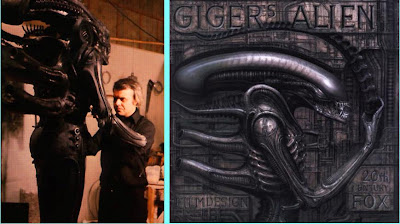 ART REPORTING TECHNOLOGY
ART REPORTING TECHNOLOGY
Art is the expression of the human reality. Every time something changes in the world, in people’s way of life, it is reported by music, literature, painting, theatre, cinema and many other kinds of artistical expressions, when technology was introduced in society it was not different. Check out some examples of it.
 The songs Admirável Chip Novo by the Brazilian rock singer Pitty and Brave New World by The British rock band Iron Maiden are intertext with the book Brave New World from the English writer Aldous Huxley.
The songs Admirável Chip Novo by the Brazilian rock singer Pitty and Brave New World by The British rock band Iron Maiden are intertext with the book Brave New World from the English writer Aldous Huxley.MUSICAL INTERTEXTUALITY
In record stores or musical web sites we can easily find similar covers of albuns from artists that have nothing in common one each other. Check out some examples of this kind of intertextuality.


MOVIES AND BOOKS
Is also pretty common the intertextuality between cinema and literature. One example is George Orwell’s book “1984” and the science fiction movie “Equilibrium” from 2002 written and directed by Kurt Wimmer.
The film itself is an original story, but it takes a large amount of influence from many books such as Aldous Huxley's book "Brave New World", George Orwell’s book "1984" and "Fahrenheit 451” by Ray Bradbury.
Some similarities and ideas taken from the book are for example the conditioning of the population, the obligatory injected “drug” they must take, the rules dictated by the Father, also called "Big Brother”, who is watching the population all the time. The destruction of the art and books by the fire is an idea from "Fahrenheit 451". Which have not the same story, but the movie is clearly based on these mentioned books.
 “The Dwarf Sebastian de Morra” from 1645 by Diego Velázquez.
“The Dwarf Sebastian de Morra” from 1645 by Diego Velázquez."Velázquez Dying Behind the Window on the Left Side Out of Which a Spoon Projects” from 1982 by Salvador Dalí.
In this painting Dalí uses the same central element as Velásquez portrait, but he mixes it with surrealist elements, in such case he does a reelaboration.

Portrait of Pope Innocent X” from 1650 by Diego Velázquez.
“Study after Velázquez's Portrait of Pope Innocent X” from 1953 by Francis Bacon
In this painting the Irish artist Francis Bacon does a citation of Velázquez portrait . He uses the central element deforming it and shows a distorted version of the Pope’s portrait.
GOOD HUMORED INTERTEXTUALITY

The American cartoonist Matt Groening uses intertextuality in this picture of The Simpsons, which is a parody of the painting from 1931 “The memory persistence” by the Spanish painter Salvador Dali.
"Texts exist in cultural and aesthetic contexts alongside other texts. They influence one another and often refer to one another overtly, this being a particular characteristic of postmodernist writing. In fact, all language is itself intertextual, since language always pre-exists the speaker: words and meanings are always second-hand in some sense”. Aidan Arrowsmith



Nenhum comentário:
Postar um comentário